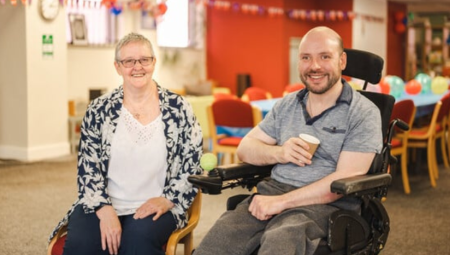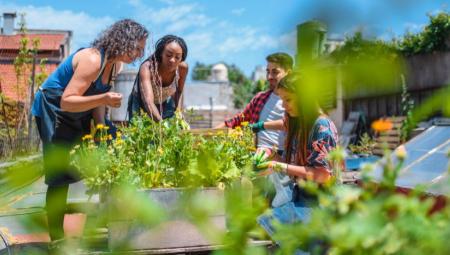Background
AgeUK estimates that by the year 2026, more than 2 million older adults may experience loneliness if no inroads are made in tackling this social problem. Apart from lowering a person’s quality of life, there are also indications that it has a significant number of health-related knock-on effects. Loneliness appears to increase the odds of developing cardiovascular diseases, dementia, depression, and even suicidal ideation, thereby linking it to many adverse public health outcomes. Moreover, older people who experience high levels of loneliness and social isolation are at increased risk of becoming physically frail. With frailty comes greater health and social care costs, including increased hospital admissions, longer inpatient stays, and increased general practice consultations.
Previous work involving social robots with older adults to reduce loneliness concentrated mostly on the relationship between the lonely person and the social robot.
CATLYP builds up on early research undertaken in South Korea where, rather than substituting for human contact, the main aim of deploying a network of social robots is to incentivize and trigger human-human communication via the transmission of so-called living noise - discrete information about everyday activities such as cooking, watching TV, making a tea, etc - between participating households.
Project Aims
CATLYP aimed to assess the potential of adoption of the transmission of living noise via social robots amongst older, lonely UK adults. CATLYP furthermore aims to gather insights into relevant factors that may help or impede the adoption of this technology amongst the target group within the UK.
Project Activity
- Phase one of CATLYP consisted of the organisation and running of a co-design workshop with lonely, older UK adults to obtain a first gauge of the potential of adoption of living noise concerning the target population.
- Phase two of CATLYP consist of the running of home trials with a mockup version of the proposed technology with a small number of participants to obtain deeper insights into the issues that might arise from the deployment of social robots and the transmission of living noise in people's homes.
Anticipated or actual outputs
The outcome of the early-stage project activities sketched above will be an initial insight into the potential for adoption of the proposed technology amongst older UK adults suffering from loneliness, and based on the input from a small number of participants. If the potential is assessed as sufficiently large, follow-up trials are planned with a larger number of participants accompanied by substantial technological development to gain a more comprehensive insight into its potential for reducing loneliness.
Summary of CATLYP project (Phase 1)
With seed funding from the EPSRC EMERGENCE network, we successfully completed Phase 1 of the project. In collaboration with Compassionate Neighbours, we held a co-design workshop at Isabel Hospice, bringing together local residents affected by loneliness. The workshop aimed to explore whether transmitting everyday living sounds between households is acceptable to older UK residents and has the potential for adoption.
Findings
After being introduced to the concept of living noise, most participants were open to sharing household activity information with family and friends, with only one participant expressing reluctance. Participants were shown different types of living noise that could be transmitted and asked to select which they would be comfortable sharing. The most chosen activities included watching TV, getting up, and cooking a meal, followed by others such as entering the house or making a coffee/tea. Most participants preferred anonymous communication but valued having adjustable privacy settings. These settings would allow users to control whether living noise is transmitted on a given day and to choose which types of activities are shared. For more detailed findings, including participants’ preferences regarding the type of robot, refer to the publication Living Noise to Combat Loneliness Amongst Older UK Adults – First Insights, listed under Relevant Publications below.
Impact
The findings were presented at the 12th International Conference on Human-Agent Interaction in 2024. Building on these initial insights, the UK-based charity, Re-engage, has expressed interest in supporting future efforts to evaluate the effectiveness of living noise transmission in reducing loneliness through home trials.
Relevant Publications
Förster, F., Warmoth, K., Celiktutan, O., Durosaiye, I. and Menon, C., 2024, November. Living Noise to Combat Loneliness Amongst Older UK Adults-First Insights. In Proceedings of the 12th International Conference on Human-Agent Interaction (pp. 376-378). https://doi.org/10.1145/3687272.3690887
Preprint: https://www.research.herts.ac.uk/ws/portalfiles/portal/70062949/HAI24_Living_Noise-5.pdf
Next Steps
Building on the initial findings, Phase 2 of CATLYP will involve small-scale home trials to evaluate the potential of living noise transmission in reducing loneliness among small groups of UK residents. Additionally, project members are seeking funding to expand the study to a larger cohort in collaboration with charities such as Compassionate Neighbours and Re-engage.
Who was involved?
- Frank Foerster (PI, corresponding), University of Hertfordshire
- Krystal Warmoth (Co-I), University of Hertfordshire
- Isaiah Durosaye (Co-I), Sheffield University
- Chengzhi Peng (Co-I), Sheffield University
- Oya Celiktutan Dikici (Co-I), King's College London
- Catherine Menon (researcher), University of Hertfordshire
- Vignesh Velmurugan (researcher), University of Hertfordshire
- Yongjun Zheng (researcher), University of Hertfordshire
Contact
f.foerster@herts.ac.uk





